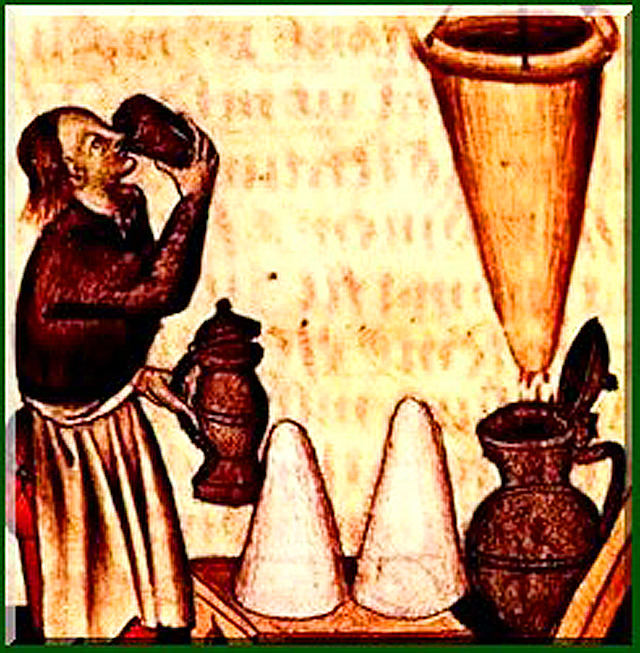When it comes to drinks, some things just go together. Gin and Tonic. Scotch and Water. Brandy and Soda. Writers and any booze they can lay their hands on. This symbiotic relationship often extends beyond the artists and into their characters, from Falstaff to Ford Prefect, and has been present from the very beginning: The Bablyonian Epic of Gilgamesh, one of humanity’s very first known works of literature, is brimming with references to wine and beer.
In honor of this ancient, fruitful, and occasionally catastrophic association, were are proud to present a new blog series: Stone Skin on the Rocks. Each week we will bring over a few of our contributing authors to offer you pairing suggestions for their works–just as a good beer, wine, or cocktail can be enhanced by pairing it with a certain appetizer, meal, or cigar, we believe a good story can be benefit from matching it with an appropriate beverage. For today’s inaugural entry, we’ll offer both a general pairing suggestion for The Lion and the Aardvark, and a unique recipe that contributor Molly Tanzer provided for her fable in particular.
For the classical connection, you can’t beat the spiced wine called Hippocras for a bevvie to pair with our collection of modern fables. As long as humans have been drinking wine they’ve been spicing it, and while Hippocrates himself may never have quaffed a glass of his namesake beverage, he did provide the so-called Hippocratic Sleeve used to strain out all the spices and additives prior to drinking. This variety of spiced wine dates clear back to Medieval Europe, when it (apocryphally) rode west to Europe along with returning crusaders. The standard recipe for Hippocras comes to us from the the 14th Century English cook book The Forme of Cury, which is in of itself a fascinating text (See this wonderful BBC4 special on the subject by dearly beloved and recently deceased chef Clarissa Dickson Wright).
Whether you prefer the French or Anglo-Saxon spins on this classic beverage, you’ll find yourself in good company, both real and literary: Hippocras was the tipple of choice for Gilles de Rais–medieval serial killer, accused werewolf, and BFF of Jeanne D’Arc–and is also quite popular with the upper classes in Westeros.
Now, if spiced wine isn’t quite your style, Molly Tanzer has a very different pairing suggestion for “The Poison-Well,” her contribution to The Lion and the Aardvark. The following is an excerpt from Rumbullion and Other Liminal Libations, a collection of her work that both reprinted her fable and gave us the idea for this blog series:
“Opening a bottle of quality champagne evokes different emotions for different people, but a common association with champagne is having some cause for celebration. While, in my opinion, a champagne such as Moët et Chandon Imperial or Veuve Clicquot (two of my personal favorites) is best enjoyed by itself, very cold, in either a flute, or (more traditionally) a coupe or saucer-style glass, champagne cocktails are lovely and very special, too. The Kir Royal/Kir Royale is perhaps the most commonly known champagne cocktail, traditionally containing around half an ounce of crème de cassis and then six ounces or so of wine. If you like the Kir Royal but want to mix it up, plenty of mixologists, professional or otherwise, have created variations on this theme, using crème de framboise (raspberry) or crème de mûre (blackberry) to give the drink their unique spin (and, I suspect, use up whatever fruity liqueur they have on hand).
Now, while tasty, crème liqueurs are very sweet (the amount of sugar gives them their silky, cream-like texture—not milk). Thus, my take on the Royal uses Cynar, an Italian amaro that contains artichoke and other vegetal ingredients, giving it an earthy, bitter taste appropriate to “The Poison-Well.” While this drink is delicious under any circumstances, it’s especially delightful when one feels the need to toast the downfall of one’s enemies.
 Choke Royal
Choke Royal
½ oz room temperature Cynar
6 oz or so of chilled champagne
Pour Cynar into a champagne flute*, then slowly top with champagne.
*While I enjoy sipping champagne from a coupe, Avengers-style, I think the Royal is best served in a flute.”
♦
If you’re still thirsty, author and reviewer Glen Mehn recently explored the connection between booze and geek culture in a guest post on the Almost Always Safe For Work website Pornokitsch–and provided some great cocktail recipes in the process. Until our next round of Stone Skin on the Rocks, may your drinks be as crisp as your pages!
Leave a Reply